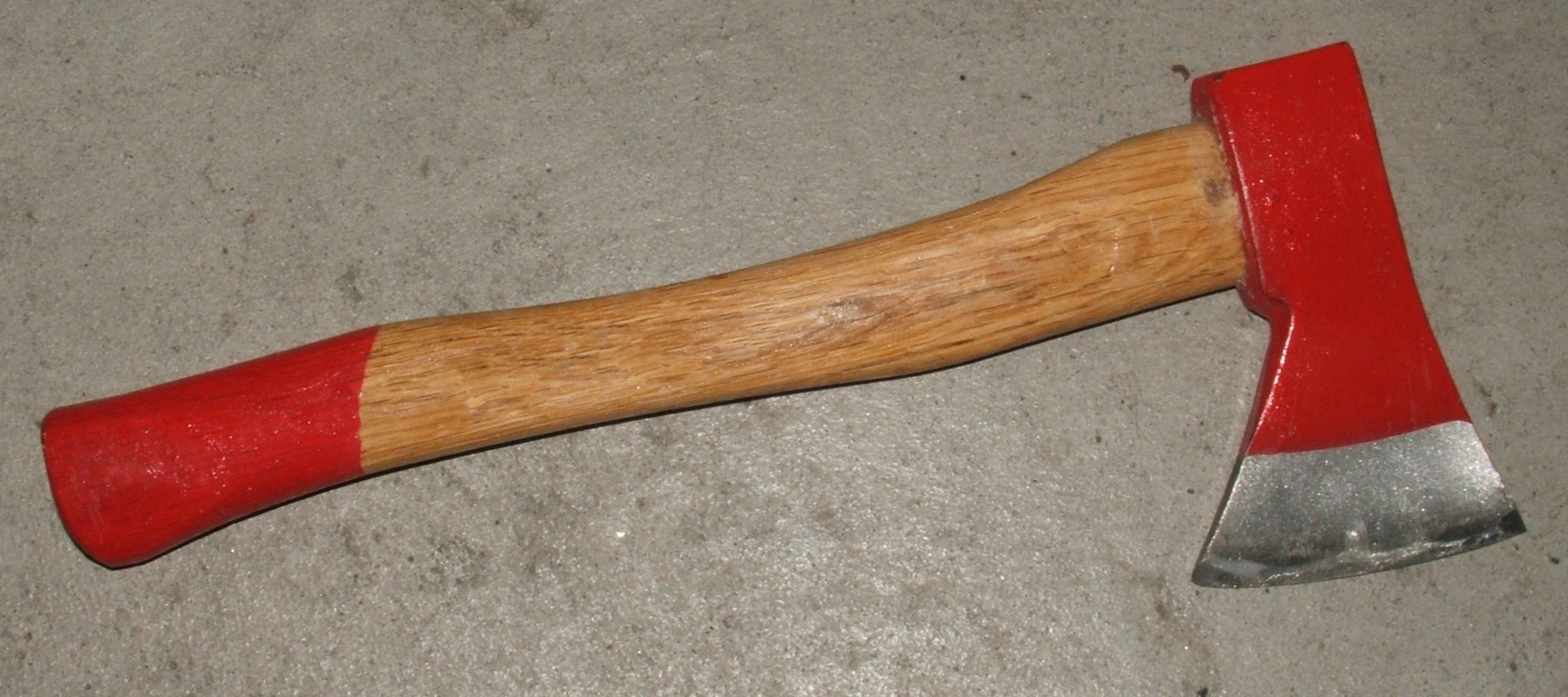hatchet on:
[Wikipedia]
[Google]
[Amazon]


 A hatchet (from the
A hatchet (from the
What is a Hatchet Used For? – Ultimate Hatchet Uses Guide
Axes {{Tool-stub


 A hatchet (from the
A hatchet (from the Old French
Old French (, , ; ) was the language spoken in most of the northern half of France approximately between the late 8th -4; we might wonder whether there's a point at which it's appropriate to talk of the beginnings of French, that is, when it wa ...
, a diminutive form of ''hache'', 'axe' of Germanic origin) is a single-handed striking tool with a sharp blade">Tool">single-handed striking tool with a sharp blade on one side used to cut and split wood, and a hammerhead on the other side. Hatchets may also be used for hewing when making flattened surfaces on logs; when the hatchet head is optimized for this purpose it is called a hewing hatchet.
The earliest known use of the noun hatchet is in the Middle English period (1150—1500) Although 'hand axe' and 'hatchet' are often used interchangeably in contemporary usage, 19th and 20th century American manufacturers and retailers (Collins, Kelly, Vaughan, Warren, Mann; Simmons, Shapleigh, Sears, et al.) unanimously distinguished hatchets from hand axes in their product catalogs, listing them in separate groupings.
A ''hand axe'' (also known by terms including "camp axe", "belt axe", "hunters axe" and others) is a short-handled woods tool. A ''hatchet'' is a short-handled construction trades tool with multipurpose head purposely designed for a given application. For this reason, hatchet handles are generally straight so that users can rotate them in their hand to switch from one head feature to the other.
The most common hatchet head patterns are the carpenter's hatchet, roofing/shingling hatchet and lathing/drywall hatchet.
"Hatchet" was used to describe a small battle axe
A battle axe (also battle-axe, battle ax, or battle-ax) is an axe specifically designed for combat. Battle axes were designed differently to utility axes, with blades more akin to cleavers than to wood axes. Many were suitable for use in one ha ...
in Middle English
Middle English (abbreviated to ME) is a form of the English language that was spoken after the Norman Conquest of 1066, until the late 15th century. The English language underwent distinct variations and developments following the Old English pe ...
.
" Burying the hatchet" is a phrase meaning "making peace," attributed to an Iroquois
The Iroquois ( ), also known as the Five Nations, and later as the Six Nations from 1722 onwards; alternatively referred to by the Endonym and exonym, endonym Haudenosaunee ( ; ) are an Iroquoian languages, Iroquoian-speaking Confederation#Ind ...
tradition of hiding or putting away a tomahawk
A tomahawk is a type of single-handed axe used by the many Native Americans in the United States, Indian peoples and nations of North America, traditionally resembles a hatchet with a straight shaft.
Etymology
The name comes from Powhatan langu ...
after a peace agreement.
References
See also
*What is a Hatchet Used For? – Ultimate Hatchet Uses Guide
Axes {{Tool-stub